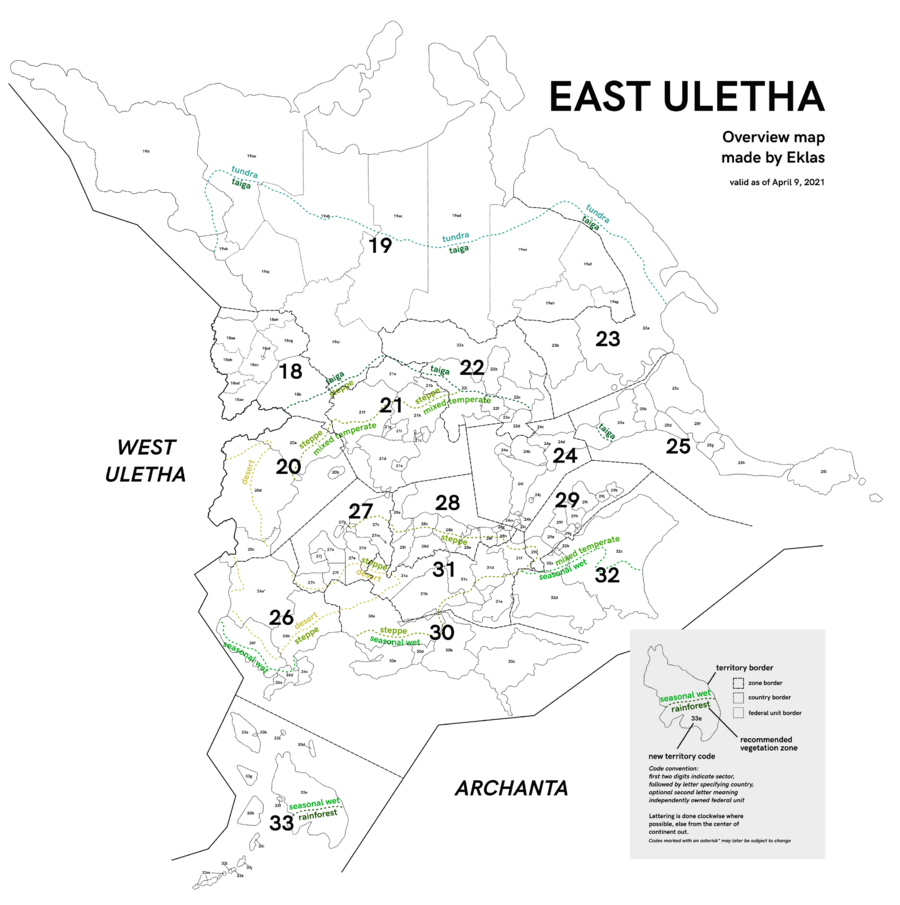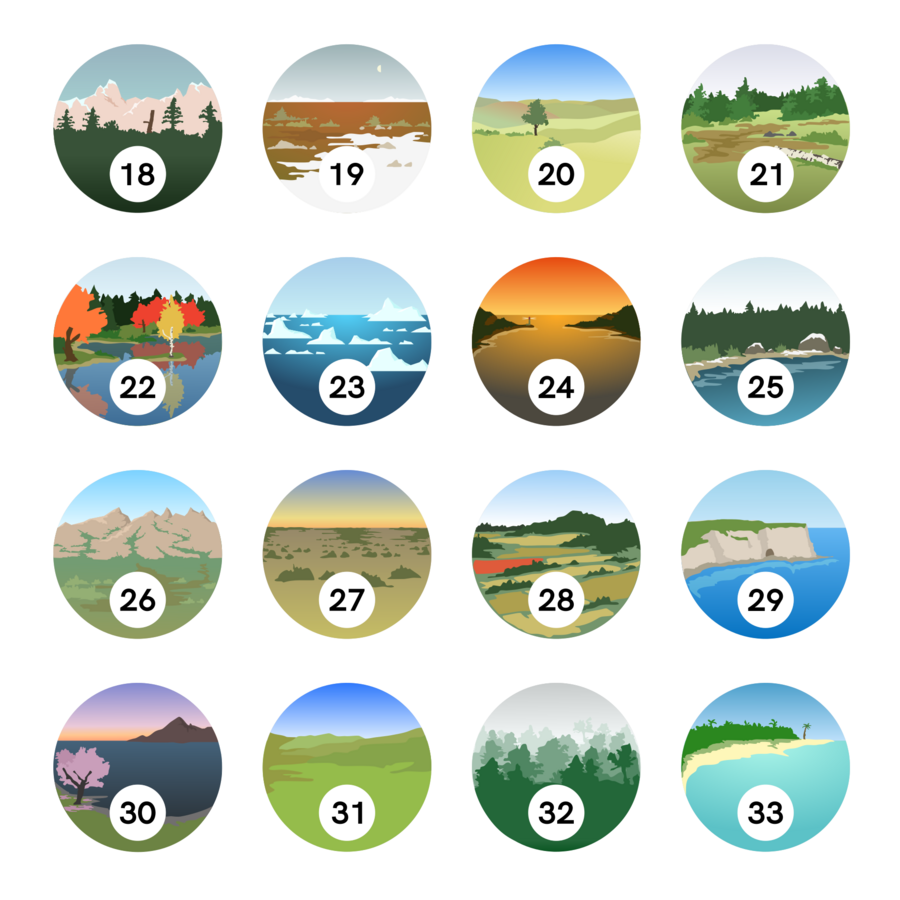OpenGeofiction:East Uletha
Jump to navigation
Jump to search
This page is dedicated to admin plans concerning the development and organization of East Uletha.
Sectors and commentary
Sector 18 (East Ulethan Taiga)
- Challenges: none (both countries are empty)
- Advantages: Blank area with great potential for interesting mapping
- Proposals and projects:
- 18a – Reserved for a multi-owner collaborative territory, possibly with a Slavic theme.
- 18b – Available to experienced users mainly interested in mapping natural features.
Sector 19 (Polar East)
- Challenges: none (both countries are empty)
- Advantages: Likely a vast area of taiga, tundra and other unique subpolar vegetation types
- Proposals and projects:
- 19a – Reserved for collaborative territory with native subpolar (native Siberian or North American, non-Russian) theme.
- 19b – Available to experienced users mainly interested in mapping natural features.
Sector 20 (Central Ulethan Steppe)
- Challenges: Large grey area
- Advantages: Convenient location in Central Uletha, could be an interesting melting pot for various languages and cultures with strong slavic influence.
- Proposals and projects:
- 20c – "Little Sister" of Midistland in terms of function as chokepoint.
Sector 21 (Temperate East Uletha I)
- Challenges: unexplainable mix of Germanic, Finnish and Romance influences.
- Advantages: some consistent large-scale mapping, nice coastline and natural feature mapping
- Proposals and projects:
- UL21c – should be cleaned up and parts of "Vatican" equivalent moved/newly assigned (World-religion discussion?)
- UL21d/e – would User jak consider moving to a romance/Italian speaking area? Germanic theme would fit well with other territories around this bay.
Sector 22 (Temperate East Uletha II)
- Challenges:
- Advantages: Good large-scale mapping across the sector. Countries in this sector are generally owned by experienced users, they have overall good mapping quality and appropriate use of languages and culture. No significant changes are to be expected in the area.
- Proposals and projects:
- General – none
Sector 23 (Emerald Sea North)
- Challenges: Only one active territory. Requires restrained, cold-climate mapping.
- Advantages: none
- Proposals and projects:
- General – none
Sector 24 (Nautical East Uletha)
- Challenges: All territories occupied
- Advantages: Good sea access and optimal climate, consistent Germanic language theme
- Proposals and projects:
- General – None
Sector 25 (Whale Sea states)
- Challenges: Incoherent mix of Scandinavian, French and English themes
- Advantages: Interesting cold oceanic theme
- Proposals and projects:
- General – Establish new long-term goal for more coherent cultural sphere
Sector 26 (Ulethan Mideast)
- Challenges: besides Midistland no active territories
- Advantages: Reserve sector for many possible future themes
- Proposals and projects:
- General – The remaining territories in the sector are to be kept as a reserve for future projects
Sector 27 (Kaspen Sea countries)
- Challenges: one English speaking territory, one (plus micro state) German(ic) speaking territory
- Advantages: Reserve sector for many possible future themes
- Proposals and projects:
- General – The remaining territories in the sector are to be kept as a reserve for future projects
Sector 28 (South Darcodian Sea Coast)
- Challenges: small size of territories neccessitates strong collaboration for large-scale geographic features. Some isolated languages.
- Advantages: active, strong Germanic theme
- Proposals and projects:
- General – None
Sector 29 (Lantian Peninsula)
- Challenges: Presence of the English language so far unexplained
- Advantages: attractive temperate and coastal territories
- Proposals and projects:
- General – None
Sector 30 (Axian Peninsula)
- Challenges: Wild mix of French, Japanese, English and Indonesian. Low activity. No compelling peninsular wide geography.
- Advantages: Low interdependence with neighbouring sectors.
- Proposals and projects:
- General – Could in the future follow an East/South-East Asia theme. Would work well with Chinese language in North Archanta and similar territories in sector 31. Could host a Japanese homeland.
Sector 31 (East Ulethan Grassland)
- Challenges: developing East Ulethan mountain chain
- Advantages: active territories
- Proposals and projects:
- 31a – Territory reserved for highly mountainous mapping; will have to serve a bridging-function for the very different language themes surrounding it. Could perhaps follow a "Switzerland"-model.
Sector 32 (Monsoon East Uletha)
- Challenges: No compelling "cultural narrative" yet.
- Advantages: Potential for either a dedicated cultural pole or a transition zone.
- Proposals and projects:
- General – None
Sector 33 (Tropical South Uletha)
- Challenges: none
- Advantages: An area with generally good mapping quality, coherent language and climate scheme
- Proposals and projects: none

